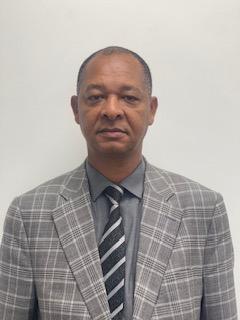As early as primary school, I knew that I wanted to be a medical doctor. My passion is to offer care and support to those who need it. I graduated from medical school in Ethiopia (where I am from) in 1994 and around this time there were a lot of misconceptions and unknowns about HIV. When the President’s Emergency Plan for AIDS Relief (PEPFAR) was first being implemented in Ethiopia in 2003, I took on a role with the Government of Ethiopia overseeing the whole PEPFAR program in the Northeast regions of the country (the regions bordering Sudan). At that time the PEPFAR program covered health issues including TB, nutrition, HIV and STIs.
Later, in 2005, I took on a new role leading Johns Hopkins University’s HIV program in Ethiopia. At this time, HIV treatment coverage was low. People at that time did not want to come to the facility for medications and disclose their status to receive treatment. We realized that if we wanted to identify new cases and get more people on treatment, we needed to bring services closer to the community. When I joined USAID Ethiopia we focused on decentralizing the HIV program away from hospitals so that people could access services more easily. As more people became aware of services, testing and treatment accelerated. For the first time, we had couples coming in for testing and treatment services together.
Over the last 20 years, PEPFAR has done more than was initially expected. Looking back at my decades long career working with PEPFAR, I am most proud of USAID’s work to scale up treatment programs, improve how we dispense drugs, and connect people living with HIV to critical services.
In the late 2000s, HIV treatment was improving from what was first available, which made it easier for people living with HIV to keep their viral load suppressed. People living with HIV who were on treatment and virally suppressed became healthier and began to see hope for the future; they started telling their stories and breaking down the barriers of stigma and discrimination.
I joined USAID Zambia as an HIV care, treatment, and nutrition advisor around the same time that the UNAIDS 90-90-90 treatment targets were introduced (by 2020, 90% of all people living with HIV will know their HIV status; by 2020, 90% of all people with diagnosed HIV infection will receive sustained antiretroviral therapy; by 2020, 90% of all people receiving antiretroviral therapy will be virally suppressed). This was an exciting time to be working in the HIV space because we started integrating HIV programming with other programs. We integrated HIV services into our malaria programming, into our maternal and child health programming, and leveraged the Feed the Future program. I think this is a critical piece that we missed at the beginning of the PEPFAR program. At the beginning of the HIV epidemic, we medicalized HIV care, but individuals need more than medicine to stay healthy. This was a turning point in Zambia and for the PEPFAR program more broadly. The Government of Zambia transitioned into leading the response overall, we included more people living with HIV in programming decisions, and civil society took on a leadership role in the response. For the first time, we were collectively working towards the same goals.
Today, I lead the HIV/AIDS team for USAID Namibia. Namibia has made incredible progress in the fight against HIV and is close to reaching the latest UNAIDS 95-95-95 treatment targets (by 2025, 95% of all people living with HIV will know their HIV status, by 2025, 95% of all people with diagnosed HIV infection will have received sustained antiretroviral therapy, and by 2025, 95% of all people receiving antiretroviral therapy will be virally suppressed).
Dr. Abeje Zegeye serves as the Continuum of Care Team Lead for USAID Namibia

